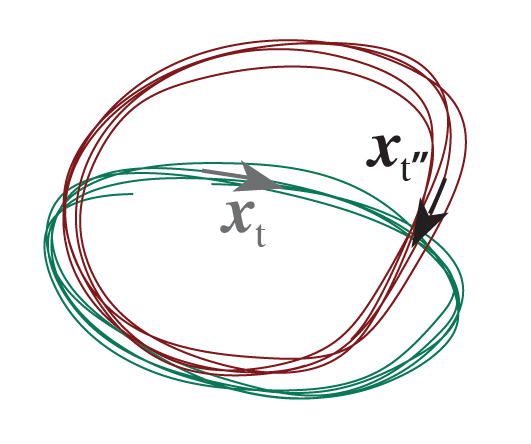We take a network-based approach to understanding the relationship between neural activity in motor cortex and the patterns of muscle activity that drive movement. This means asking: if a recurrent network has the job of generating the observed patterns of muscle activity, what would / should the population response of that network look like? Are some population-response patterns 'better' than others (i.e., more noise robust)? If so, is that predictive of the empirical population response?
We find that the dominant features of the motor cortex population response are surprisingly well explained by the dominant features expected in noise-robust recurrent networks. Specifically, the dominant signals in the neural population appear not to be the 'output' signals. Instead, they are signals that allow the output to be generated in a noise-robust fashion.

